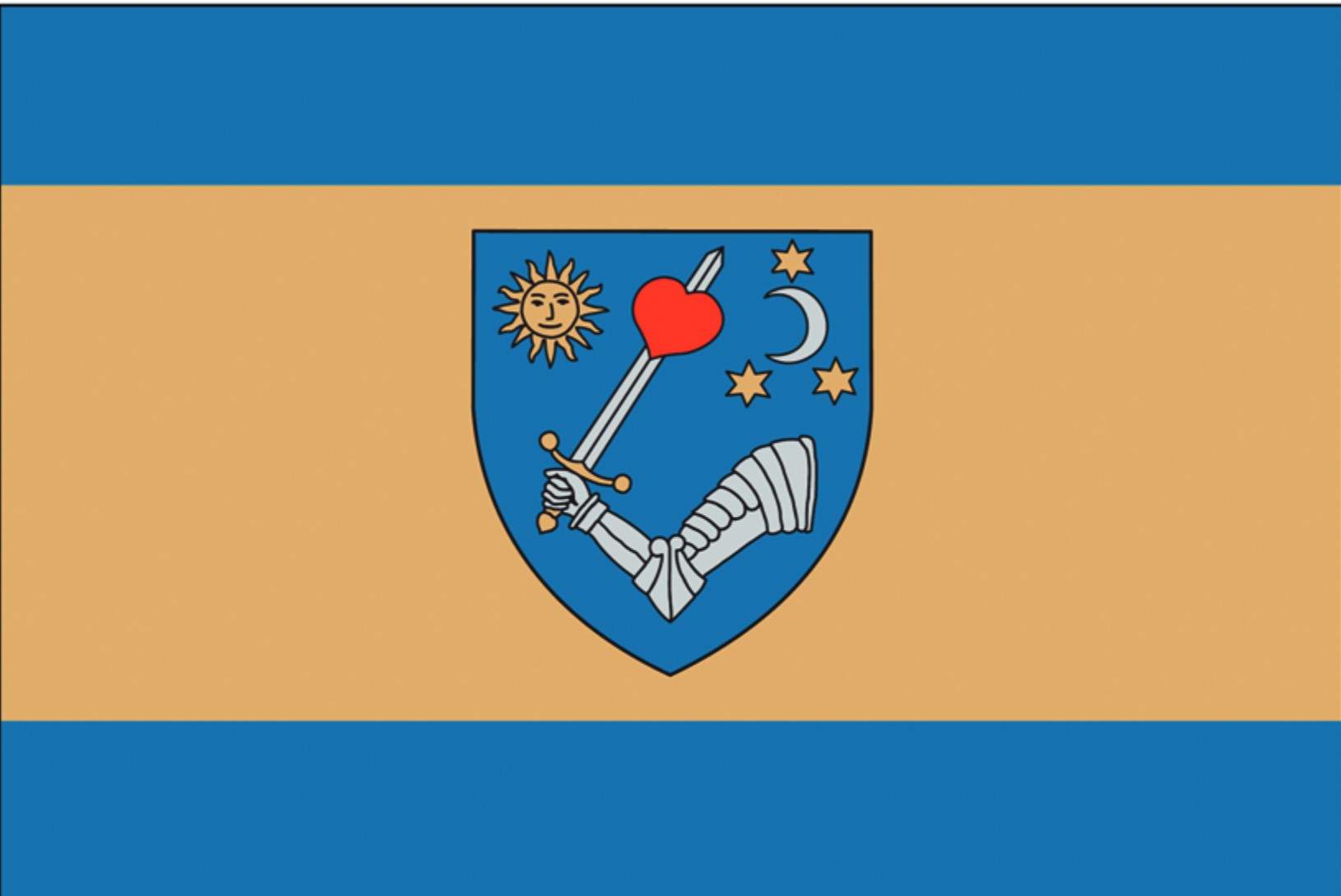
The High Court of Cassation and Justice (ÎCCJ) has won the case for the Covasna County Council (CJ) in a case brought by the Romanian Civil Forum of Covasna, Hargit and Mures, which sought to annul the county flag approved last September. by decision of the Government.
At the end of 2021, the Public Forum of Romanians from Covasna, Hargit and Mures filed a request with the Court of Appeal of Brasov to file a lawsuit against the Government of Romania and the County of Covasna, demanding the annulment of the GD, and won the case. However, on December 19, he lost his appeal in the Supreme Court.
This is the same flag that the Court of Appeal of Brasov canceled almost ten years ago. It was established by a decision of county councilors in 2008 and had a coat of arms approved by the GD in 2007.

The flag consists of a blue rectangular panel, cut by a yellow belt, containing the coat of arms of Covasna County in the middle.
According to the description in GD, the coat of arms is an old coat of arms adopted by the Romanian authorities in 1928. The armed hand and sword remind of the bravery of the inhabitants in defensive battles. The heart symbolizes the kindness of local residents. The sun and crescent are specific symbols of the region, and the three stars indicate the three cities from which the county was formed. The enamels on the coat of arms represent all the ethnic communities of the county in three traditional colors. The color of the flag comes from the enamel of the coat of arms. Yes, the two side panels have the field color of the coat of arms blue, and the belt, on which the coat of arms is depicted, has received the solar enamel of the coat of arms – gold, indicating that the sun is shining. for all (Sol omnibus lucet, according to Petronius), states GD.
A description on the Cowasna County Council website highlights Szekler’s identity. “The armed hand and the saber remind of the bravery of the border shekels in defensive battles against the Turks and Tatars, as well as the pierced heart, which can also be interpreted as the sacrifice of our ancestors in defensive battles. The sun and crescent are the special symbols of the Seklers, the three stars indicating the three cities from which the district was formed: Sepsi, Orbai, and Kezdi. The flag of the district also summarizes all these elements,” the cited source notes.
Disputes for years
The flag, as well as the coat of arms of the Kovasna county, have caused numerous local disputes over time. The Public Forum of Romanians from Covasn, Hargit and Mures believes that they are only representative of the Hungarian community and not of Romanians, who make up almost 25% of the county’s population.
In an appeal sent several years ago to the Romanian Academy and the Ministry of Regional Development and Public Administration, in which the leadership of the Forum asked not to give a positive assessment to the Covasna County flag, it was mentioned, among other things, that the Flag approved by the Covasna County Council is “a variation of the so-called Sekel flag “, “invented” in 2004 by the Sekel National Council, “an organization that is not legally registered and advocates territorial autonomy along ethnic lines in the case of the Covasna and Hargit Districts”.
Representatives of the Civic Forum concluded that the coat of arms reproduced on the flag, which is an armed hand with a sword, on which is a red heart, sun, moon and three yellow stars on a blue and gold background, is almost similar. to the former coat of arms of the county of Haromšek (Three places), now Kovasn, from the time of the Austro-Hungarian Empire, also used in the interwar period.
On the other hand, the president of the regional council of Covasna, Tamas Sandor, explained that “the armed hand and the sword remind of the bravery of the inhabitants in defensive battles, the heart means the kindness of the souls of the inhabitants, the sun and the crescent are specific symbols of the region, and the three neighboring stars refer to three places, with which the district was formed”.
He also mentioned that some heraldic elements of the county coat of arms, such as the coat of arms, can be found on the coats of arms of some old Romanian families from Transylvania, such as the Bohdan family from 1619.
Source: Hot News
Emma Shawn is a talented and accomplished author, known for his in-depth and thought-provoking writing on politics. She currently works as a writer at 247 news reel. With a passion for political analysis and a talent for breaking down complex issues, Emma’s writing provides readers with a unique and insightful perspective on current events.